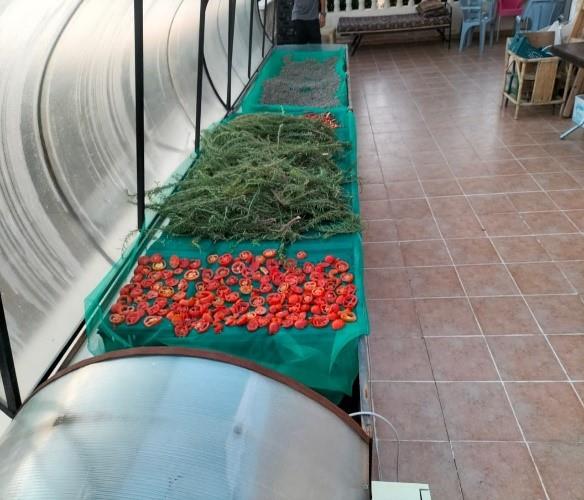Establishment of water-food-ecosystem nexus targeted household food processing units

Photo of the solar drier at the Sustainable Agricultural Association (Taken by ICARAD team)
The Food and Agriculture Organization of the United Nations in collaboration with The International Center for Agricultural Research in Dry Area (ICARDA) under the regional project “Water Efficiency, Productivity and Sustainability in the NENA region” by enhancing water use efficiency and productivity in dryland agriculture, through activities that involved the establishment of energy-efficient food drying units (sun-drying units) and related capacity-building programs for selected households aimed at enhancing productivity and food quality/value for local consumption and potential income generation- adapted to more rehabilitated and sustainably managed agro-silvo-pastoral environments.
Sun-drying is traditionally used in different parts of the world to dry various fruits like grapes, figs, and concentrated jams. ICARDA developed and tested innovations where solar power is utilized, such as drying food of plant origin through innovative solar cooling. A food drying training was conducted on 23 June 2022 for nine women on vegetable and herb drying. A follow-up and backstopping were provided to the trainees to overcome problems and answer immerging questions using learning-by-doing approach. The cooperative is now producing dried products such as tomatoes, okra, thyme, rosemary, and other herbs and vegetables.
The suggested solar dryer consists of tables with covers that form a tunnel where the product is placed inside. The walls and the cover consist of polycarbonate sheets fixed in a metal frame. Each table is three meters long and one meter in width, where the walls are 15-30 cm in height, and the tables are raised 40 centimeters from the earth by metal legs (shown in the illustration in the diagram section). The product will be placed on mesh so the air will flow below the product for enhanced drying.
The dryer consists of tables that could be put together to form a twelve meter tunnel. The solar drier is equipped with a DC fan 12V 40 W, installed on a separate part with the control unit. The system is designed to have an autonomy of six hours during the day and two hours during the night. Furthermore, the temperature sensor controls the dryer, and the solar system consists of one panel and a control unit.
This activity is implemented under the regional project “Implementing the 2030 Agenda for water efficiency/productivity and water sustainability in NENA countries” directly under the Regional Water Scarcity Initiative. This project is funded by the Swedish International Development Cooperation Agency.
